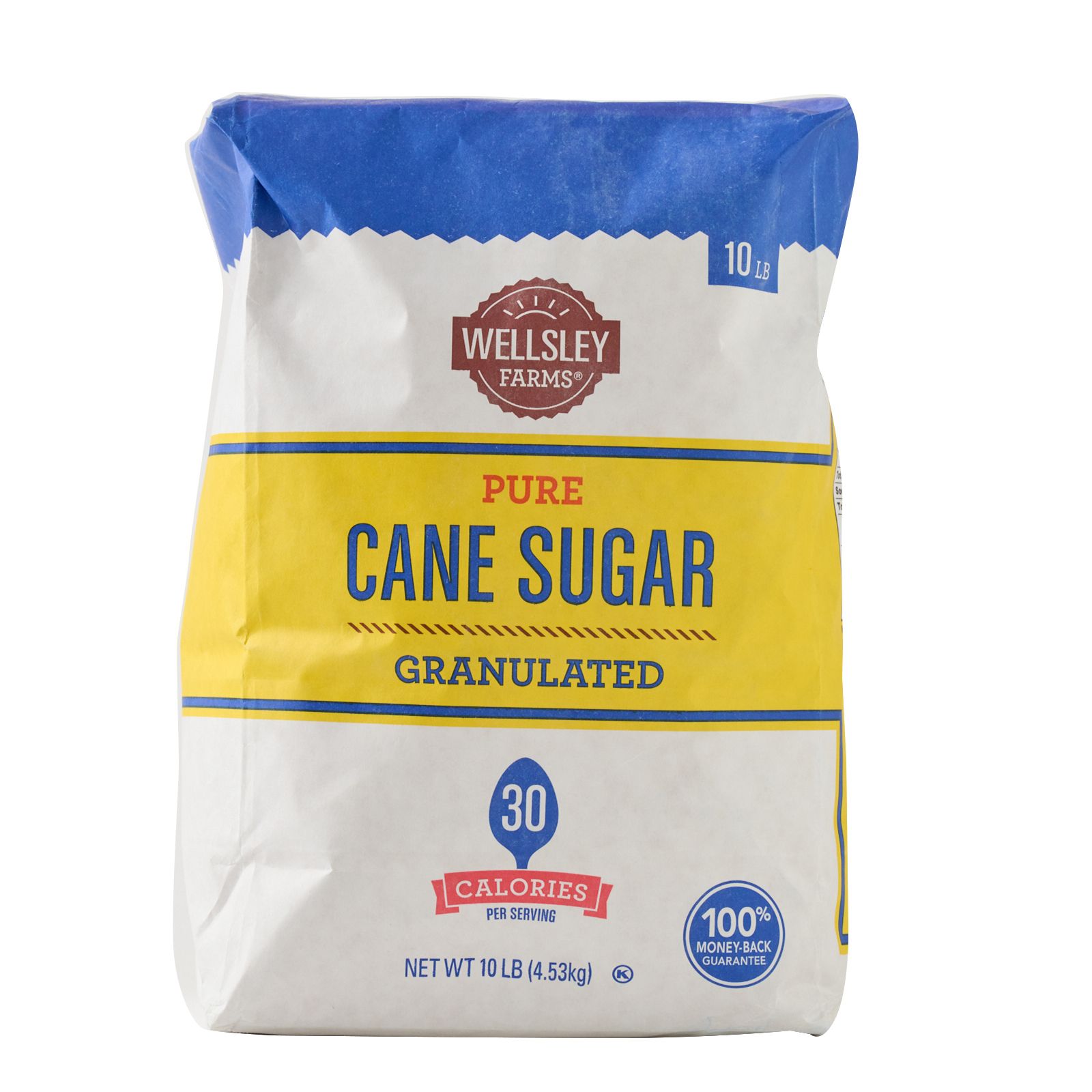The Science Behind Cane Sugar Processing: Exactly How Sweet Taste is Fine-tuned
The Science Behind Cane Sugar Processing: Exactly How Sweet Taste is Fine-tuned
Blog Article
A Thorough Overview to the Environmental Effect and Sustainability Practices in Cane Sugar Processing
The environmental effect of walking stick sugar handling provides an intricate selection of obstacles that warrant mindful evaluation. From soil degradation and excessive water usage to the carbon footprint related to cultivation and production, the consequences of traditional practices are far-reaching. On the other hand, the fostering of cutting-edge sustainability actions supplies a path towards a lot more accountable production methods. Understanding the interaction in between these problems is vital for stakeholders in the market. What certain methods can be executed to strike a balance in between performance and ecological stewardship? The responses depend on a closer look at both the obstacles and prospective services.
Review of Walking Cane Sugar Processing
Cane sugar processing entails a collection of systematic actions that change sugarcane into refined sugar. Initially, harvested sugarcane is transferred to processing facilities, where it goes through cleaning to get rid of soil and particles. Following this, the walking cane is crushed to extract juice, which is after that clarified by getting rid of pollutants via heating and the addition of lime.
The made clear juice undergoes evaporation, where water is eliminated to focus the sugar web content. These crystals are divided from the remaining syrup using centrifugation, resulting in raw sugar.
The final item is after that dried out and packaged for distribution. Throughout this entire process, maintaining effectiveness and high quality control is essential to make sure the sugar fulfills sector standards. Each action in cane sugar processing not only adds to the last item yet additionally has effects for resource use and waste generation, setting the stage for discussions on sustainability and environmental impacts related to sugar manufacturing.
Ecological Difficulties of Manufacturing
The manufacturing of cane sugar presents several considerable ecological difficulties that warrant interest. One key worry is the extensive use agrochemicals, including fertilizers and pesticides, which can cause soil deterioration, biodiversity loss, and contamination of regional water resources. The overflow from sugarcane fields frequently carries these chemicals into close-by ecological communities, disrupting marine life and affecting the health of communities reliant on these water bodies.
One more challenge is the high energy consumption connected with sugarcane processing. The boiling and refining stages require substantial warmth, largely created by melting nonrenewable fuel sources, contributing to greenhouse gas emissions. Additionally, the expansive acreage required for sugarcane cultivation can result in deforestation and environment damage, more exacerbating climate adjustment and harmful wildlife.
Moreover, the labor practices in some regions elevate ethical problems, as employees might encounter poor working problems and poor incomes. This scenario usually bolsters a cycle of hardship in regional communities. Cane Sugar Processing. Addressing these environmental challenges is important for establishing extra sustainable practices in walking cane sugar manufacturing, eventually profiting both the setting and the neighborhoods associated with this market
Water and Land Usage Influence
Water sources and land utilization are critical elements in the cane sugar market that dramatically impact the environment. The growing of sugarcane requires substantial water input, with price quotes suggesting that it can eat up to 2,000 litres of water per kilogram of sugar created. This intensive usage of water usually causes deficiency of local water resources, impacting not only the sugarcane vineyards but also surrounding communities and communities that rely upon the very same water sources for farming and domestic use.

Furthermore, land usage for sugarcane cultivation can bring about deforestation and the conversion of all-natural environments into monoculture haciendas. This practice reduces biodiversity, disrupts regional ecosystems, and contributes to dirt degradation. The growth of sugarcane areas often intrudes on beneficial agricultural land, producing competitors for resources between food and biofuel production.
Lasting techniques, such as optimizing irrigation strategies and implementing crop rotation, are crucial to reduce pop over here these effects. By taking on extra read efficient water usage and land administration approaches, the cane sugar industry can decrease its eco-friendly impact, ensuring a balance between farming performance and ecological conservation.
Greenhouse Gas Emissions
Greenhouse gas exhausts represent a significant environmental worry within the walking cane sugar handling sector, specifically as farming techniques increase to fulfill international need. The farming of sugarcane, a plant that prospers in exotic environments, counts greatly on artificial plant foods and chemicals, which add to nitrous oxide emissions. Furthermore, land-use adjustments, consisting of logging for brand-new sugarcane plantations, release carbon dioxide stored in greenery and soil.
During processing, power intake is one more major resource of greenhouse gas exhausts - Cane Sugar Processing. Many sugar mills make use of fossil gas to power equipment and generate heat, causing substantial carbon impacts. In addition, the transport of raw sugarcane and ended up products adds layers of emissions via fuel combustion in lorries
The collective effect of these emissions aggravates environment change, positioning risks not only to the setting yet additionally to the long-lasting feasibility of the market. Stakeholders should acknowledge the urgent demand for detailed methods that attend to these emissions. This involves evaluating current farming practices, refining methods, and transportation systems to determine areas for enhancement and reduction. Attending to greenhouse gas emissions is vital for cultivating a more sustainable walking cane sugar industry in an altering environment.

Sustainable Practices and Innovations
Lasting methods and developments are significantly crucial in the cane sugar handling market as stakeholders look for to minimize ecological effects while keeping efficiency. One substantial improvement is the implementation of incorporated plant administration, which maximizes resource usage by incorporating soil monitoring, insect control, and plant rotation methods. This strategy enhances return while minimizing chemical inputs and protecting dirt health.
Additionally, the fostering of renewable resource resources, such as biomass from sugarcane residues, has obtained traction - Cane Sugar Processing. By converting waste items into energy, refining centers can decrease their reliance on nonrenewable fuel sources, thus decreasing greenhouse gas emissions
Water management methods have actually also seen enhancements with the recycling and reusing of water in handling plants, considerably minimizing freshwater intake. Innovations in innovation, such as accuracy farming, enable farmers to keep track of plant health and wellness and source usage moved here better, making certain sustainable cultivation practices.
Additionally, qualification programs like Fair Profession and Rain forest Partnership urge environmentally responsible farming methods and advertise social equity within the supply chain. By accepting these lasting techniques and technologies, the walking cane sugar handling sector can boost its strength and add favorably to ecological stewardship.
Verdict
The ecological influence of walking cane sugar processing presents considerable difficulties, including soil deterioration, high water usage, and greenhouse gas discharges, together with honest issues related to labor practices. Addressing these problems through sustainable practices, such as integrated crop management, sustainable power fostering, and water recycling, is crucial. By advertising socially equitable and environmentally responsible methods in sugar manufacturing, the sector can mitigate its adverse effects, ensuring a more lasting future for both areas and environments associated with this market.
Cane sugar processing entails a series of organized actions that transform sugarcane right into refined sugar. Each step in cane sugar handling not just contributes to the last product but additionally has ramifications for resource usage and waste generation, setting the stage for conversations on sustainability and environmental effects connected with sugar production.
Greenhouse gas emissions represent a substantial ecological issue within the cane sugar handling industry, specifically as agricultural methods expand to satisfy global demand.Lasting methods and innovations are significantly important in the cane sugar handling industry as stakeholders look for to lower environmental impacts while keeping productivity.The ecological influence of cane sugar handling offers significant difficulties, consisting of soil degradation, high water usage, and greenhouse gas exhausts, together with moral worries connected to labor practices.
Report this page